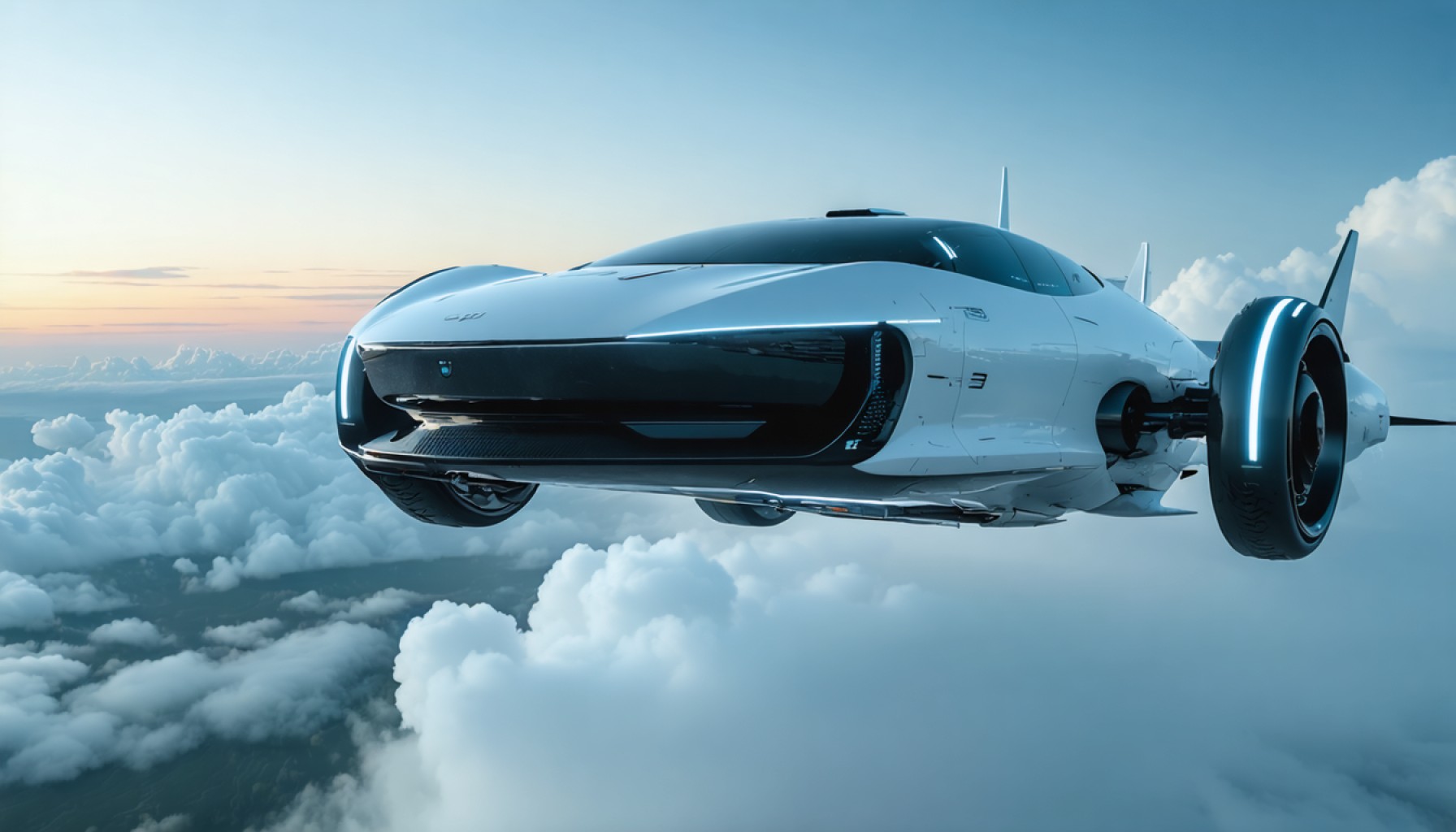- XPeng Motors is advancing personal transportation with a hybrid vehicle concept that transitions from driving on roads to flying in the sky.
- The “Land Aircraft Carrier” by XPeng’s subsidiary AeroHT transforms into the eVOLT, an Electric Vertical Take-Off and Landing Aircraft.
- XPeng showcased its flying vehicle at CES and successfully conducted a test flight, attracting 3,000 eager pre-orders.
- The company has invested $413 million USD to develop AeroHT, aiming to make flying cars more popular than traditional EVs.
- XPeng also competes in robotics and challenges Tesla, furthering its ambitions for global market influence.
- XPeng’s innovations point to a future where flying cars could transition from science fiction to everyday use.
Against the backdrop of sprawling cities and congested highways, the dream of soaring over traffic jams may soon become reality. In a move that feels ripped from the pages of a science fiction novel, XPeng Motors—a name synonymous with innovation in China’s bustling EV sector—is stretching its wings and taking the transportation race skyward.
Imagine a vehicle that seamlessly transitions from cruising down the boulevard to soaring through the clouds. XPeng, with its visionary zeal, is transforming this fantasy into a tangible concept. Their subsidiary, AeroHT, unveiled a marvel of engineering dubbed the “Land Aircraft Carrier.” On land, it’s an agile six-wheeler, but with a quick transformation, it morphs into the eVOLT, an Electric Vertical Take-Off and Landing Aircraft, poised for the air. This sleek creation boasts a panoramic cockpit, promising thrill-seekers a 270-degree view as they zip through the troposphere.
The world got its first tantalizing taste of this airborne innovation at CES, a renowned hub for the latest tech. Recently, XPeng put skeptics to rest by conducting a successful test flight, further fueling the buzz. Eager adopters seemingly scrambled to secure one of the 3,000 pre-orders, as the skies near a new era. XPeng’s confidence is unshaken, taking concrete steps by earmarking an impressive 3 billion RMB—roughly $413 million USD—to cultivate AeroHT’s potential. They envision a future where flying cars aren’t just a novelty but eclipse ground-bound EVs in popularity.
Yet, XPeng’s ambitions aren’t grounded solely in aerial ventures. With a keen eye on global dominance, they’ve bolstered their investments in robotics and are challenging Elon Musk’s Tesla on multiple fronts. Unexpectedly high EV sales showcase their growing prowess, but time will tell if their aerial aspirations truly touch the promised skies.
While the street noise of traditional cars fades into the background, look upwards. A revolution in personal transportation is on the horizon, taking the leap from sci-fi dreams to everyday reality. XPeng’s ventures underscore a bold message: the future is not just around the corner—it’s above us, and it’s ready to soar.
The Future of Transportation: XPeng’s Flying Cars Prepare to Take Off
Overview
XPeng Motors, a leading innovator in China’s burgeoning electric vehicle (EV) sector, is reshaping the concept of travel by pushing the boundaries with its ambitious flying car project. This venture could revolutionize personal transportation, merging the convenience of on-ground EVs with the potential of aerial mobility.
Features and Specifications of XPeng’s eVOLT
1. Design: The eVOLT is a dual-purpose vehicle, also known as the “Land Aircraft Carrier,” that transitions from a six-wheeled on-ground vehicle to an electric Vertical Take-Off and Landing (eVTOL) aircraft.
2. Cockpit Design: Offering a 270-degree panoramic view, the cockpit is designed for an immersive flying experience, catering to thrill-seekers and tech enthusiasts.
3. Functionality: The eVOLT is equipped to navigate both roadways and airspace, providing versatile commuting options and reducing traffic congestion significantly.
How XPeng’s Innovation Stands Out
– Investment in AeroHT: XPeng has committed approximately $413 million USD to develop AeroHT, the division responsible for the flying car. This indicates confidence in their project’s success and potential market expansion.
– Test Flights: Successful test flights have demonstrated the feasibility and safety of the eVOLT, setting a new standard in the race for flying cars.
– Order Interest: With 3,000 pre-orders, there is clear consumer interest and demand, suggesting a promising market outlook.
Industry Trends and Market Forecast
1. Global eVTOL Market: The global eVTOL market is expected to grow exponentially, with urban air mobility (UAM) seen as a solution to urban traffic and pollution issues. Companies like XPeng and competitors such as Uber Elevate are leading this charge.
2. Regulatory and Infrastructure Challenges: While the technology is promising, there are significant regulatory hurdles, including airspace management and safety regulations, that need to be addressed.
Pros and Cons of Owning a Flying Car
Pros:
– Ability to bypass traffic for faster commuting.
– Innovative technology offers a futuristic travel option.
– Potential to decrease ground-level pollution.
Cons:
– High costs associated with buying and maintaining such vehicles.
– Current limitations in infrastructure and regulation.
– Possible safety concerns and public acceptance issues.
Real-World Use Cases
1. Urban Commuting: Ideal for urban areas where traffic congestion is severe, flying cars can offer a swift alternative.
2. Emergency Services: Rapid deployment in emergency situations could greatly benefit from such technology, potentially saving lives.
Insights & Predictions
– Public Acceptance: Successful integration into daily life depends on overcoming public skepticism and proving the safety and reliability of flying cars.
– Long-Term Adoption: As infrastructure and regulations evolve, flying cars might transition from a novelty to a common sight in the skies.
Actionable Recommendations
– Stay Informed: Follow tech exhibitions like CES to see the latest developments in flying cars.
– Advocate for Policy Change: Supportive public policy could accelerate the adoption of flying cars by addressing safety and regulatory concerns.
– Evaluate Personal Needs: Consider the practicality and cost-effectiveness of flying cars compared to traditional transportation methods before considering a purchase.
For further details on XPeng Motors and their cutting-edge innovations, visit the XPeng Motors official website.
